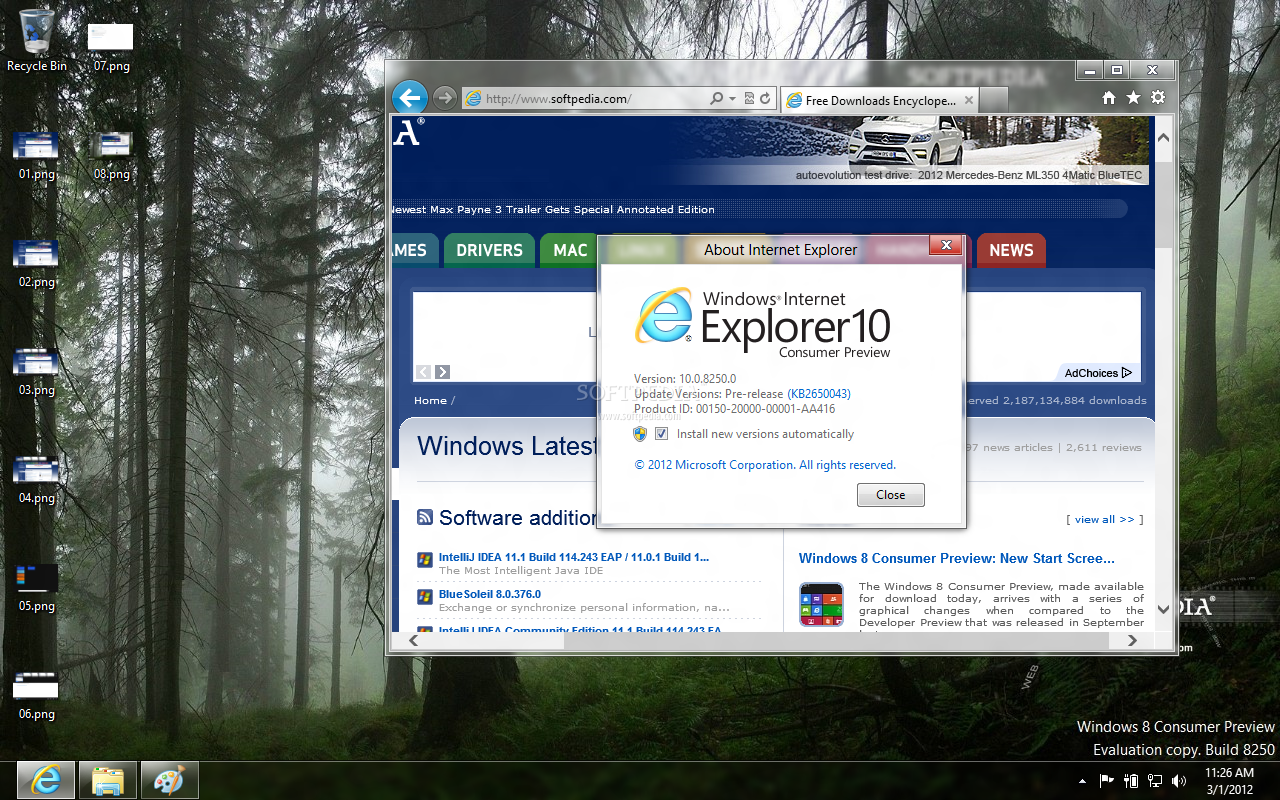
However, in order for Flash video to play in IE10 in Metro view, the site has to be included on a Compatibility View (CV) list. In contrast, the Metro-style IE10 (or just plain IE10) supports no video-related plug-ins except for Flash.
Internet explorer 10 update#
In addition, on computers, IE10 for the desktop functions is just like IE9, supporting all plug-ins, including Flash, which ships with Windows 8 and is updated via the Windows 8 update mechanism. Of course, HTML5 means no adaptive streaming, no DRM, no live streaming, etc, etc, etc. So, HTML5 is a foolproof way to distribute video to IE10 irrespective of Windows 8 version or IE 10 mode. As with IE9, IE10 is HTML5 compatible and will decode H.264-encoded video. Here's what we know about serving video to IE10 on computers. OK, to recap, there are two Windows 8 modes, Modern and Classic, and two IE modes, just plain IE10 (or Metro-Style) and IE10 for the desktop. If you're viewing a web page in IE10 in Metro-style mode, you can click the Page Tools icon (the wrench thingie on the lower right in Figure 4) and elect to view the page "on the Desktop." This opens up a separate window in IE10 in desktop mode which you view in Windows 8 Classic. In the above referenced document, this view is called simply IE10, while other Microsoft documents call this the "Metro style IE10." As you can see in Figure 4, this view has tiles on top and the address bar on the bottom.įigure 4. The second, "Internet Explorer 10 (with the Windows Store app look and feel)," has a more tile-based look. According to the Microsoft Developer Network (MSDN) document entitled "Developer guidance for websites with content for Adobe Flash Player in Windows 8 (Internet Explorer)," IE10 runs in two modes, "Internet Explorer 10 for the desktop and Internet Explorer 10 (with the Windows Store app look and feel)." The first looks like a traditional browser, like that shown in Figure 3. Internet Explorer 10 is the pre-installed, preferred browser in all three versions of Windows, and Flash comes pre-installed in all versions.
Internet explorer 10 upgrade#
Interestingly, if you upgrade your existing computer from Windows 7 to Windows 8 (as I did), the Classic version will look just like Windows 7, minus the Start button.įigure 2. I'm not sure how the 17-year-old (and totally familiar) Start button went from indispensable to verboten, but if you're in Classic mode, you'll have to find another way to run your programs and turn off your computer. Modern is the tile-faced view first found on Windows phones, and now featured in all Windows 8 related advertising and marketing, as shown in Figure 1.Ĭlassic has the look and feel of previous Windows versions, excepting the Start button (see Figure 2). While you can upgrade your existing computers to Windows 8/Windows 8 Pro, you have to buy Windows RT devices new.Īll Windows 8 versions run in two modes, Modern (formerly Metro), and Classic. In contrast, Windows RT is exclusively for tablets and computers, and won't run your existing programs. The first two are for general-purpose computers and should be backwards compatible with all programs that run on Windows 7, give or take the random incompatibility that usually accompanies an operating system upgrade.

Windows 8 VersionsĪccording to the Microsoft site, there are three versions of Windows 8: Windows 8, Windows 8 Pro, and Windows RT. Part of the problem is that there are so many terms, views and modes thrown around that you need a scorecard to keep track. Unfortunately, at least as it applies to Flash video, delivering to Windows 8 is also a fairly complex process to understand, though at least one service provider, Brightcove, has found a way to simplify Windows 8 support for their customers.
Internet explorer 10 how to#
So understanding how to deliver video to Windows 8 devices is obviously a priority. Though Windows 8 has less than a 2% share at this point, it's obviously going to grow rapidly in the near term. According to NetMarketShare, Windows-based computers enjoy a 91.45% share in the desktop computer market.


 0 kommentar(er)
0 kommentar(er)
